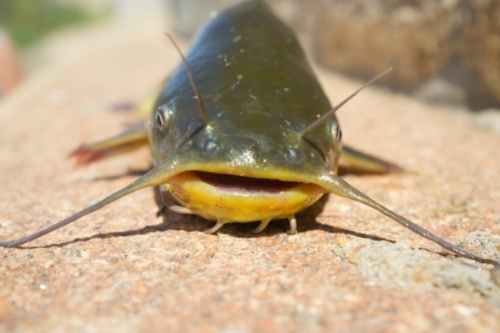There are many types of catfish, and each one has different characteristics in terms of size, habitat, food, and taste. Many catfish are tasty and good to eat, but there are certain factors that make some catfish more palatable and enjoyable to eat than others.
In this case, we will talk about bullheads. Definitely, this type of catfish has a delicious flavor that makes it worth the effort to catch it. Whether to eat it or use it as bait, you have to keep in mind that catching a bullhead is not easy, and you should take certain precautions.
Because of their needle-like teeth and powerful mouths, they may bite you. You may experience a stinging sensation if you contact the barbs on the fins as they pump poison into your skin.
The agony isn’t life-threatening, but it will last for hours. As a result, you might have to rub some mucus from its belly to relieve the discomfort.
Table of Contents
What Size Catfish Should You Eat?
We know that there is a great variety of catfish, and each one is characterized by having a different size. However, it is important for you to know that bullheads have subspecies. That means we can find up to 7 different types of bullhead catfish. Therefore, it is possible that some are more delicious than others when it comes to eating them.
Generally speaking, the best catfish size to eat is between 3 and 5 lbs. The smaller catfish are generally better to eat because the larger ones are toxic. The smallest size bullheads will be the most pleasant for our taste buds.
Why are Smaller Bullhead Catfish More Flavorful?
Little catfish have a better flavor since the meat is fresher. The flesh of the fish is likely to escape from toxins because it isn’t too big.
Little bullhead catfish are easy to catch and have a better flavor than larger catfish. When this sort of fish is hatched, it doesn’t have a variety of feeding options. Insect larvae, small crayfish, and flies are popular prey for this age of catfish.
They love to reside in areas with a lot of water. Some of them are riverbanks, shallow flats, and creeks. Because these small fish wish to stay out of deep water, their taste is excellent.
The shallower hiding areas, depending on your location, have less mercury. Mercury and other pollutants are more likely to settle near the bottom of the river. Mercury is a toxin that enters the water supply as a result of contamination and other factors. You might get mercury poisoning if you aren’t careful. Consumption of too much shellfish or other fish is the most common cause.
Why Do Big Bullhead Catfish Have a Bad Taste Compared to Small Bullhead Catfish?
Huge bullhead catfish taste worse than small bullhead catfish because their meat contains more toxins. The meat of older catfish worsens and becomes mushy, producing a distinct and richer flavor when fried, as previously described. As a consequence of moving in the river for extended periods of time, bigger catfish have more toxins built up in their body.
Bottom-dwelling species are the ones that suffer the most since the majority of the toxins concentrate at the river’s bottom. Fish pick up toxins from the food they eat; thus, if that food was located at the river’s bottom, it’s definitely poisonous.
Is Bullhead Catfish the Best Species to Eat?
It depends on the personal tastes and the diet of each person. Not all of us have the same taste buds, which is why people will prefer eating bullhead catfish, while others will want flatheads, channels, or blues.
However, according to the majority of the people who have eaten catfish, many of them have coincided that the most delicious is the Flathead Catfish.
It is also true that the taste of a bullhead has been described by many individuals as something indescribable, and they have affirmed that it is worth fishing. In fact, the meat of this fish is sweet, which is nice for our taste buds.
Because a flathead catfish’s diet is entirely made up of live fish, there really is no muddy flavor in them. The nutrition and habitat of the flathead catfish contribute to its wonderful flavor. The meat is rigid but not as solid as a channel or blue meat, and it has a much flakier texture. It practically melts in your mouth when you eat it.
When you cook channel catfish, on the other hand, it has a very firm texture. It’s flaky, but not so much that it falls apart in your hand. The mildly flavored flesh could be provided a lot of seasoning. They do, however, have a muddy flavor because they’re often found in muddy places.
Blue catfish and channel catfish are related. Although the meat is a little bigger than expected, it still tastes fantastic. Bear in mind that the most significant influences on flavor are nutrition and the environment.
A mud-free version of the channel catfish is the blue catfish. It has a light flavor and a flaky texture, but it’s not quite as muddy as the other.

